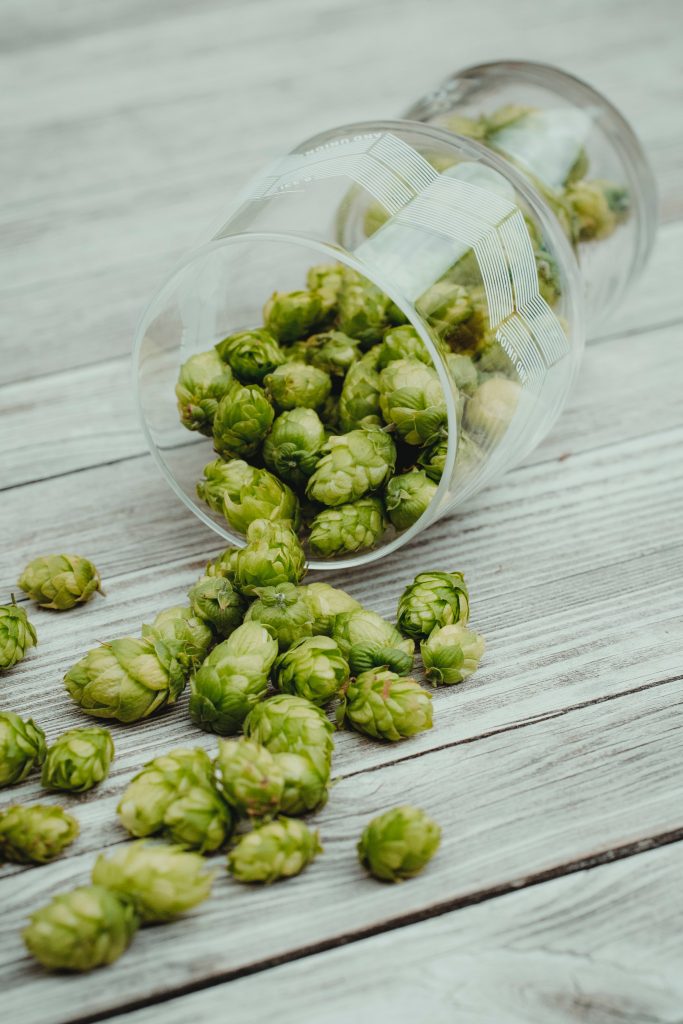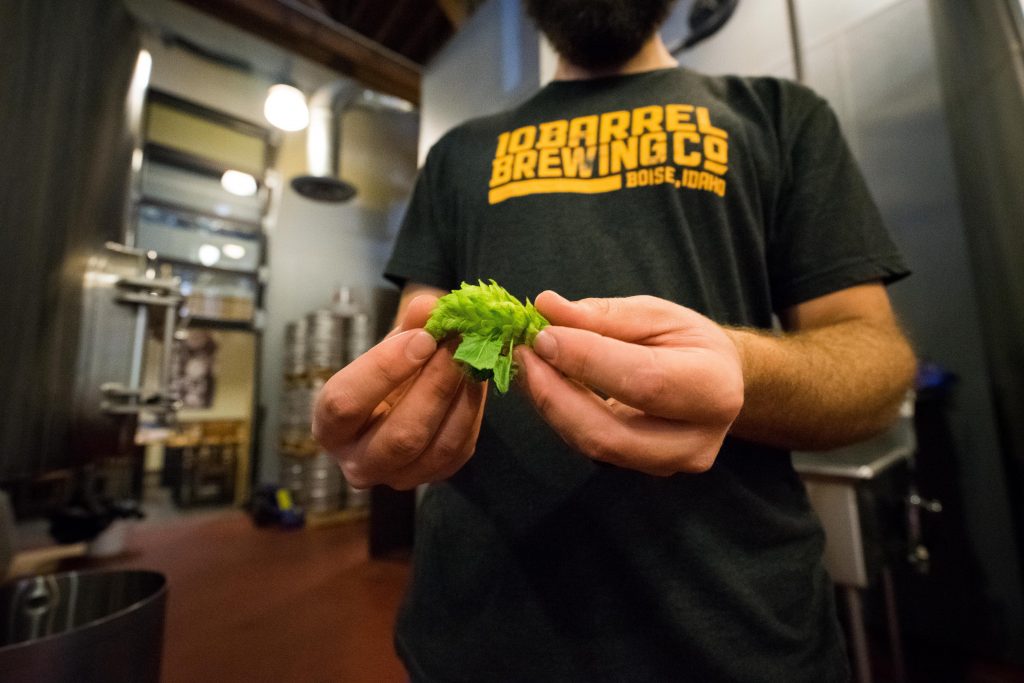This post contains affiliate links which we are compensated for if a purchase is made. Using links costs you nothing and helps to support the ongoing creation of content. Thank you for using them.
Can You Add Too Much Hops? This question has frequently appeared in homebrew forums and it seems straightforward at first glance however the effect the number of hops has upon the beer is dependent on when the hops are added in the brewing process, the type of hops used, and the type of beer being made.
Hops additions can be divided into those that are designed to increase bitterness, flavor, or aroma, so you are not just talking about the total amount of hops but also when it is added. As flavor and aroma are largely dependent on personal taste, the question that is really being asked is can you make beer too bitter by adding too much hops?
You can not add too much hops to a brew that it makes so bitter that it becomes unpalatable. The limiting factor on the level of bitterness is our own ability to perceive the flavor. Beers can range from 1 to about 100 IBUs (International Bittering Units), however, our ability to detect bitterness is limited to between 4 and 9 IBUs.
To put IBUs in perspective mass-market American lagers IBU ranges of 5 to 10 IBUs whereas Bavarian hefeweizens are around 10 IBUs. Amber lagers are around 20 to 25 IBU while American pale ales are 35 to 40 IBUs and, American India pale ales (IPAs) 55 to 70 IBUs.
What Is An International Bitter Unit (IBU)
The International Bitterness Units (IBUs) scale was developed in the early part of the 20th century. International Bitterness Units are a measurement of the amount of bittering compounds that are present in beer with the primary compounds that cause this bitter flavor being oxidized and isomer alpha acids however, other compounds such as polyphenols can contribute.
A single unit IBU equals 1 part per million (1 mg/kg) of iso-alpha acids in solution. However, it is important to note that our taste buds become saturated with acids at a relatively low level of IBU, which means that it doesn’t necessarily mean that high IBU beers are perceived as bitter. Additionally, other ingredients within the beer can also affect the perceived bitterness. For example, Amber ales with an IBU of 60 do not taste as bitter as Pale Ale with an IBU reading of 55.
Do Different Types Of Hops Affect The Degree Of Bitterness In The Beer?
The particular type of hops that is used in the brewing process does significantly affect the degree of bitterness in the final beer. The degree to which this occurs is dependent upon the alpha acid content of the variety being used. The percentage of acid can vary between 2 and 15% with the high percentage varieties imparting a more bitter flavor.
As a result of this variation hops varieties are split into three main categories:
- Bittering Hops
- Aromatic Hops
- Dual Purpose Hops
Varieties classified as bittering hops usually have acid contents above 10% whereas aromatic hops have far less acid present and are not suitable for bittering. Dual-purpose hops tend to have a mid-range acid level and are highly aromatic. There is a list of over 170 varieties available on morebeer.com.

When to Add Hops During the Brewing Process
Hops are typically added to the wort during the boil at different stages and they can be added as a single addition or they can be added at different stages to create different effects. These effects are generally categorized into bittering, flavor, and aroma additions. In some recipes there is only one addition however, it is common to have 2 or 3 additions to create these different effects but this can increase to as many as 6 additions in some cases. These additions sometimes referred to as the “Hop Schedule”.
When Are Bittering Hops Added
The hops additions that are added that create a bittering effect are added early in the boil usually once all of the components of the wort have been added to the pot and a rolling boil has been achieved. The length of time that the hops remain in the wort is typically 60 minutes. The additions are added to counteract the sweetness of the malt preventing a syrupy-sweet flavor.
When Are Flavoring Hops Added
The flavoring hops are usually added when there are 15 and 30 minutes remaining in the boil. At this stage, relatively few of the compounds that create the bitterness are extracted from the hops however, a crisp hoppy flavor is created within the beer. The types of hops that are used at this stage can be the same variety of hops as the bittering stage or they can be a different type. The effect they have on the brew is largely driven by the length of the boil times.
When Are Aroma Hops
Aromatic hops additions are designed to create extract hop oils right at the end of the boil, to create that effect hops are usually added in the last 5 minutes of the boil or as the heat is being switched off. This is done because the compounds that are responsible for creating the aromas are extremely volatile and will be vapourised into the atmosphere relatively quickly. To capture and extract these compounds the heat is applied for a relatively short period of time.
